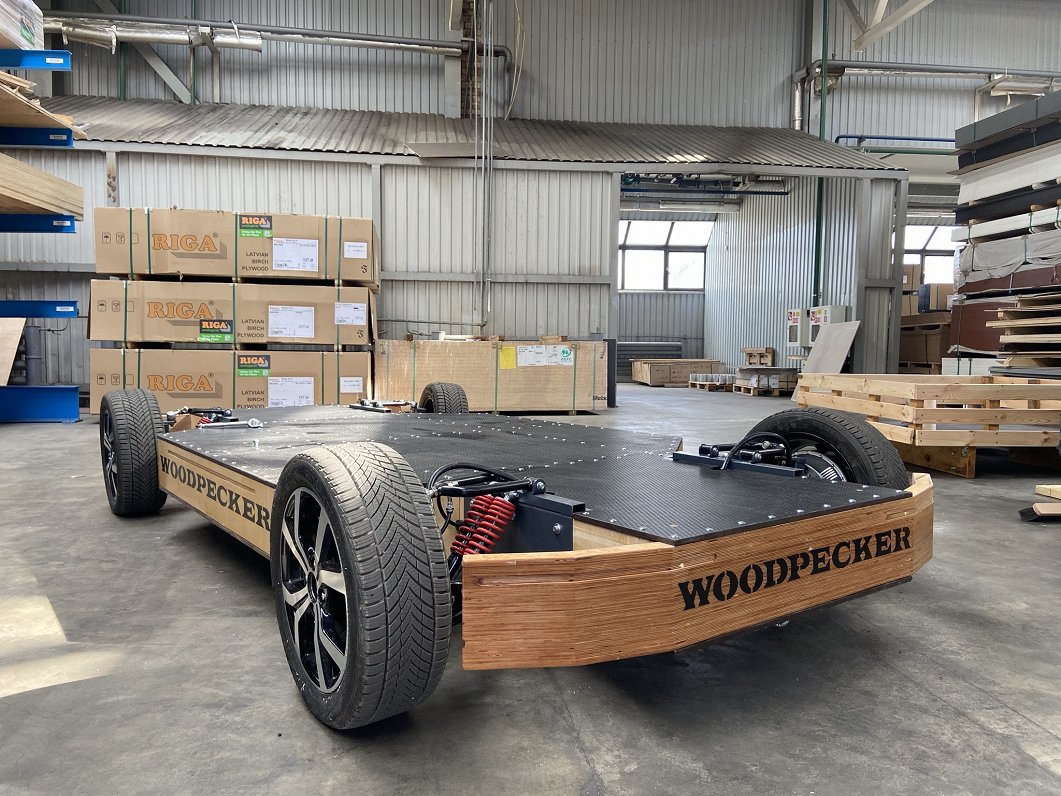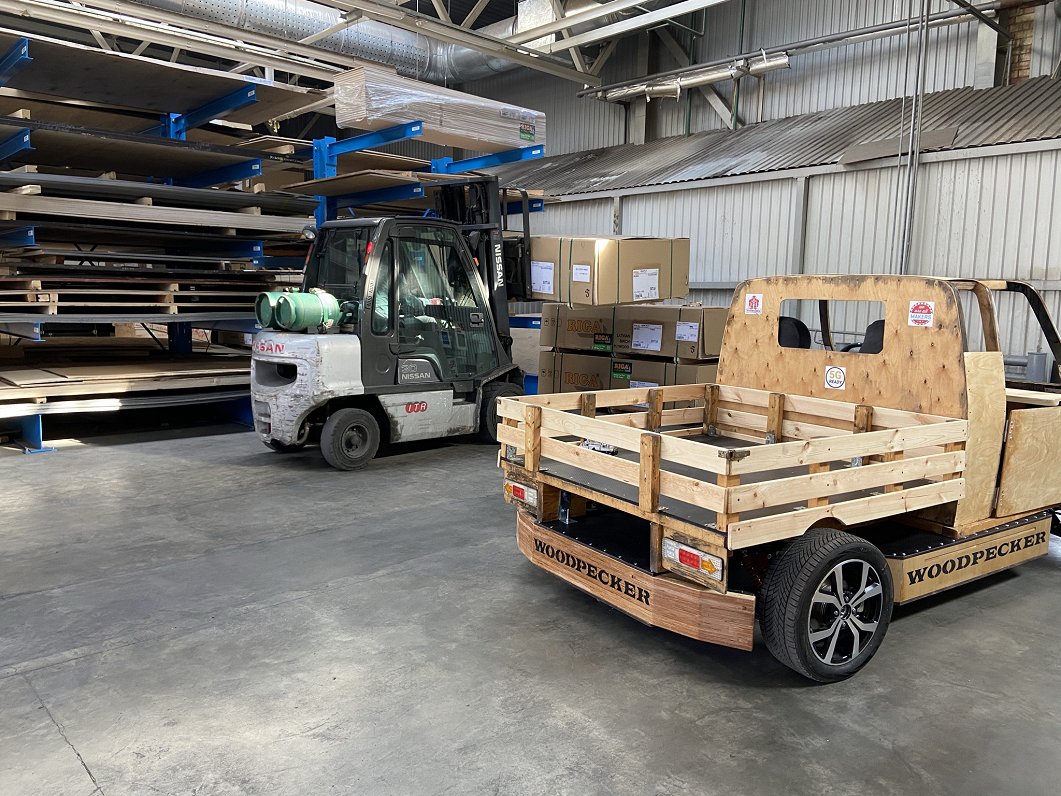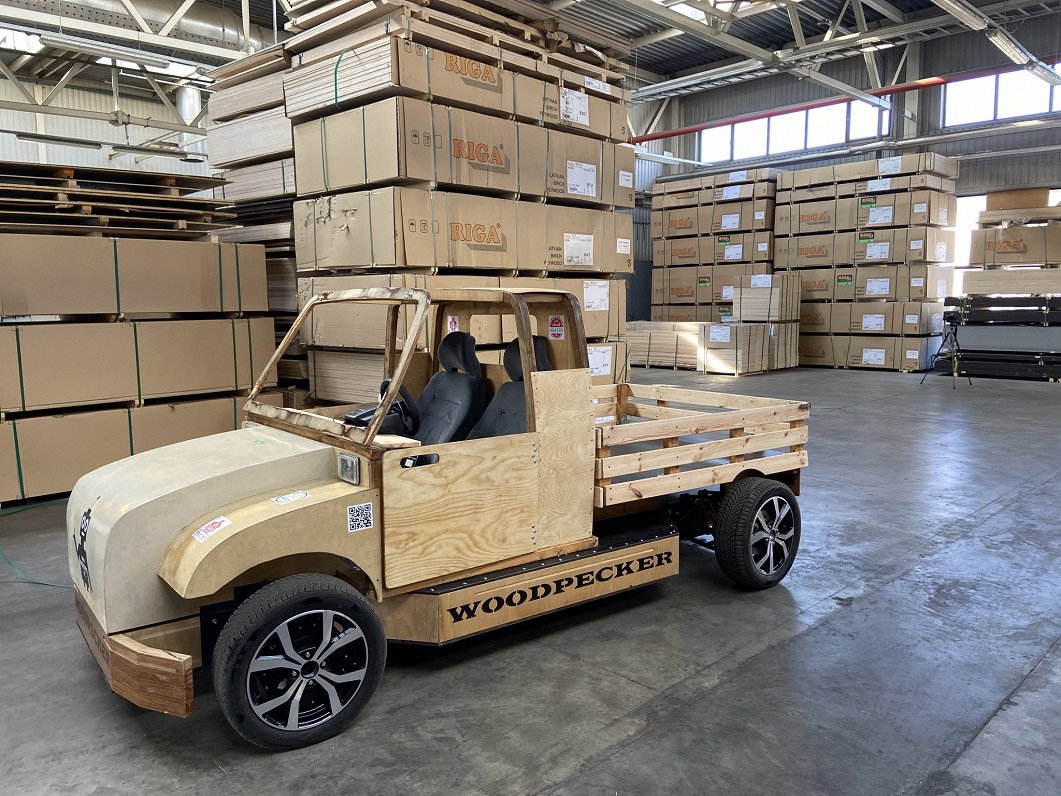The design of the Woodpecker electric car platform created in Latvia is like a big skateboard with a battery, motor, wheels etc. Although the wheels are made out of other materials, wood is used to produce the platform itself.
One of the arguments proposed by the creator of Woodpecker, Rihards Gailums, is eco-friendliness: making a wooden frame generates much less CO2 than building a frame out of plastic or metal. At the same time, if you have to dispose of a car like this or its part, you can just bury it in soil, and it will degrade over time without creating any significant CO2 emissions.
"Major car factories are these huge breathing organisms that expel a great deal of CO2. And once the car is finished, they put it on a ship that delivers it to another continent. In our case, the supply chain is much more efficient: the platform does not take up much space, and wood is available everywhere in the world. We can handle our production anywhere in the world through CNC machining contractors: we don’t need a separate factory," Gailums explains.
He expresses hopes that Woodpecker will turn into a global movement for clean road transport in the future. These could be used as industrial vehicles on factory grounds, and in warmer climates, they could also do well in street traffic.
Previously, Gailums worked on converting ‘normal’ cars into smarter and self-driving vehicles. However, over time he realised that it was not economically feasible, and in some cases even impossible for technical reasons, because manufacturers prevent tampering with vehicle control systems. It was then that Gailums had the idea of building a completely controllable vehicle platform based on the principles of open source.

The vehicle frame is made out of plywood based on an ecological bio-origin lignin adhesive made in Latvia; the plywood is CNC-cut into parts of necessary sizes, which can then be assembled by people with specialised knowledge. The platform’s longest part is two metres long, and all of its components can be transported in the boot of a larger vehicle without a trailer. The platform is modular, designed using the mindset of Ikea furniture: you can assemble or disassemble the product, modify it, swap components. If you damage the frame, replacing a specific part is easy.
The purpose of this approach is to make vehicle repairs as easy as possible, without needing a 3D printer, or ordering specialised parts from the manufacturer in a faraway country. This has attained particular relevance today, with logistics in a shambolic state and the car industry dependent on microchips, semiconductors made by other companies, having to spend months waiting for these components.
The development stage of Woodpecker involves cooperation with universities to improve its structure, conduct calculations for more advanced versions, and estimate CO2 emissions throughout the platform’s lifecycle, from manufacturing to disposal. The platform’s website woodpeck.org offers drawings for independent production, with plans to also make small production runs of part kits. The development of the Woodpecker project is supported by national and EU grants.
Woodpecker follows the ‘keep it simple’ principle. The platform uses simple semiconductors, off-the-shelf controllers and not particularly specialised microchips.
"We cannot eliminate semiconductors entirely, but the more complex the processors, microchips and other components, the higher the risks associated with them. In contrast to the rest of the world where semiconductor components become more complex and harder to make, we are taking the path of a solution that is as simple as possible," Gailums says.
A few solutions are available for the vehicle body, and everything depends on the specific purpose and use: whether the vehicle needs an enclosed cab, one or two seats, a cargo box, industrial equipment etc. The platform is intended for speeds of up to 40 km/h. These vehicles could be used in fenced off enclosed areas, like factory grounds and university campuses. Industrial vehicles are the faster route towards monetisation, because businesses and organisations are better positioned to try innovative forms of transport than private individuals.

"We are currently working with Latvian local government and universities, in order to find a real transport application for these vehicles," Gailums says. He believes that this project could be interesting to many developing countries.
Through its website, the team has already received many offers for the possibility of importing or making these platforms in Brazil and India where more sophisticated vehicles aren’t always the most efficient solution.
This story appears in the latest edition of the Baltic Business Quarterly magazine published by the German-Baltic Chamber of Commerce in Estonia, Latvia and Lithuania and is reproduced by kind permission.

































